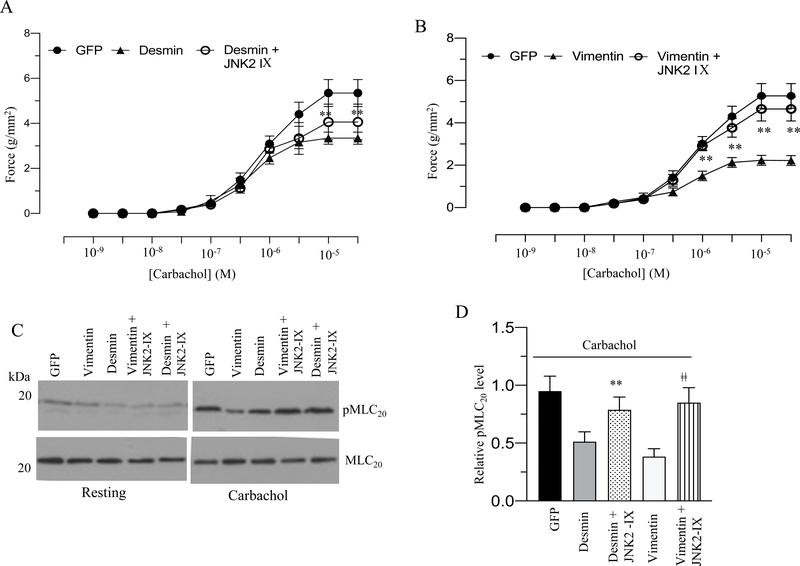Figure 15. Pharmacological inhibition of JNK2 activity rescues the carbachol induced decreased contractile responses as well as the decrease in MLC20 phosphorylation observed with desmin or vimentin overexpression.
A-D: Murine BSM strips devoid of urothelium and submucosa were transduced with an adenovirus encoding GFP, desmin and vimentin for 48 h. In some cases, strips were treated with JNK2 specific inhibitor, JNK2-IX (100 nM) for 48 h. A-B: Concentration dependent contractile response (cumulative carbachol concentration, 10−9 to 3X 10−5 M) by murine BSM strips overexpressing GFP, desmin, and vimentin in the presence or absence of JNK2-IX. The data is presented as grams per cross sectional area (g/mm2). C: Carbachol-stimulated MLC20 phosphorylation levels in murine BSM strips overexpressing GFP, desmin or vimentin in the presence or absence of JNK2-IX. BSM strips were contracted in the presence or absence of JNK2-IX (100 nM) for 30 seconds with carbachol (10 μM) and rapidly frozen at 0 sec (resting) and 30 sec of contraction and then processed the muscle strips for MLC20 phosphorylation. D: Quantification of immunoblot (C). Data are expressed as means ± standard error mean (SEM), n = 8 mice in each group. **, P ≤ 0.05 versus murine BSM strips overexpressing desmin in (A). **, P ≤ 0.05 versus murine BSM strips overexpressing vimentin in (B). **, P ≤ 0.01 versus murine BSM strips overexpressing desmin in (D). ǂǂ, P ≤ 0.01 versus murine BSM strips overexpressing vimentin in (D).

